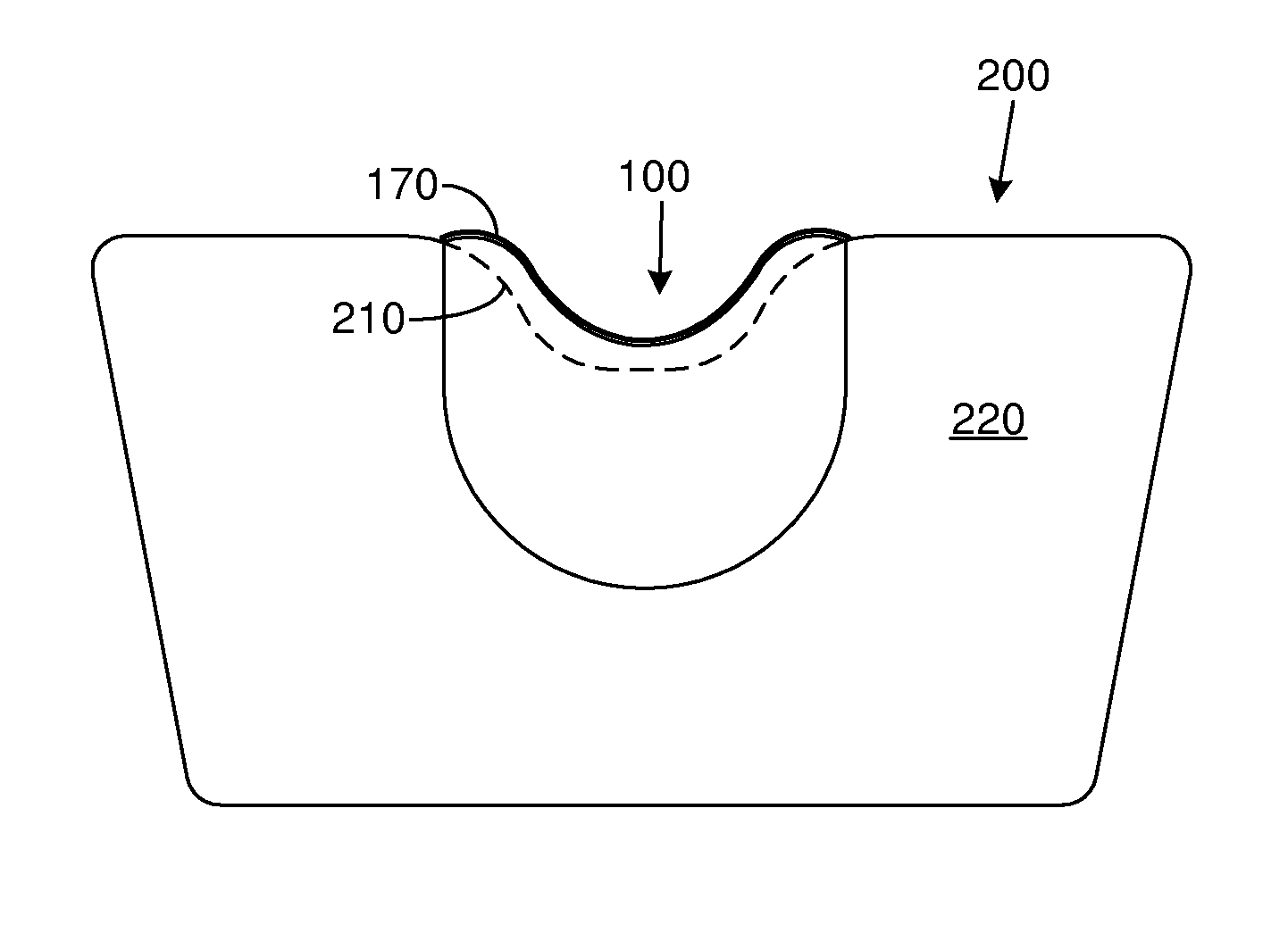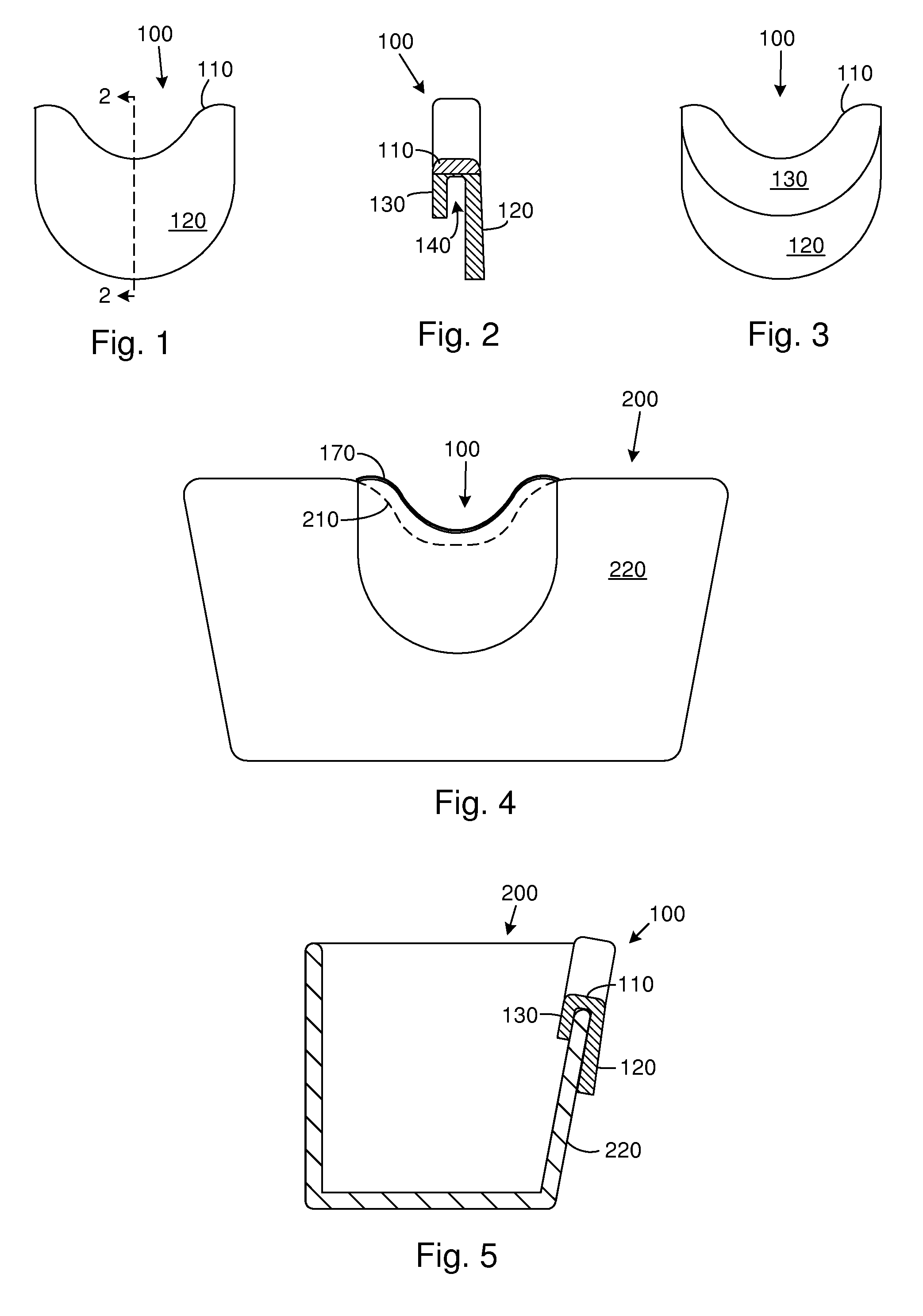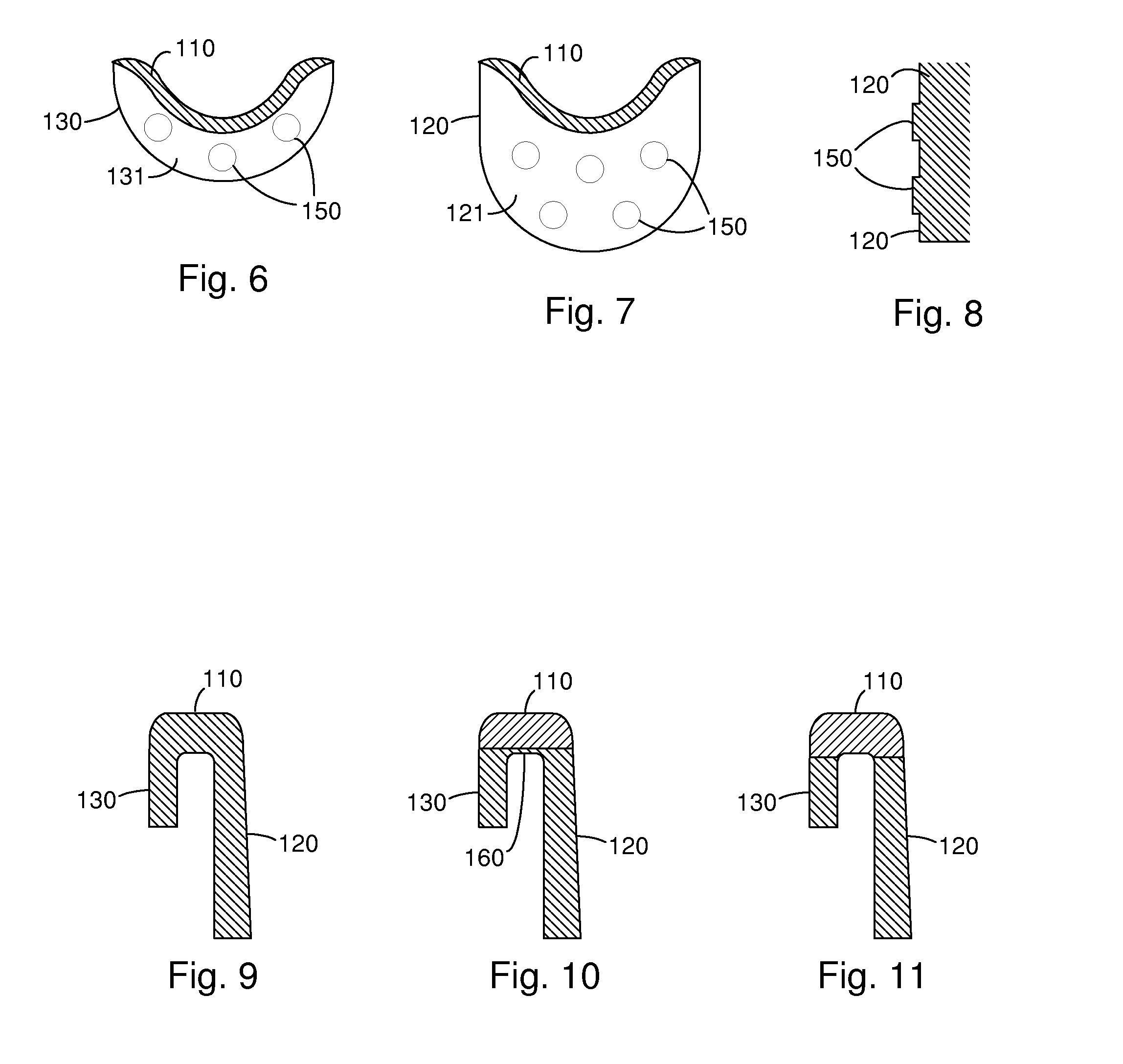Neck guard for use in a salon/barber industry sink
a sink and barber technology, applied in the field of barber industry, can solve the problems of client's neck resting at an uncomfortable angle, neck pain, and inconvenient use, and achieve the effects of less compressible, increased weight of the neck guard, and less stiffness
- Summary
- Abstract
- Description
- Claims
- Application Information
AI Technical Summary
Benefits of technology
Problems solved by technology
Method used
Image
Examples
Embodiment Construction
[0024]One or more embodiments of the invention are described below. It should be noted that these and any other embodiments described below are exemplary and are intended to be illustrative of the invention rather than limiting.
[0025]As described herein, various embodiments of the invention comprise neck guards that provide improved comfort, sanitary conditions, durability and resistance to leakage between a client's neck and the lip of a salon / barber industry sink. In one embodiment, the neck guard is constructed from a solid, yet flexible material such as rubber, which allows the neck guard to conform both to the client's neck and to the shape of the indentation in the sink. The neck guard includes an upper, cushioning portion which is positioned on top of the indentation, as well as a stabilizing portion that has front and rear sidewall portions that extend downward along the sides of the sink below the indentation to hold the neck guard in place.
[0026]In one embodiment, the cush...
PUM
 Login to View More
Login to View More Abstract
Description
Claims
Application Information
 Login to View More
Login to View More - R&D
- Intellectual Property
- Life Sciences
- Materials
- Tech Scout
- Unparalleled Data Quality
- Higher Quality Content
- 60% Fewer Hallucinations
Browse by: Latest US Patents, China's latest patents, Technical Efficacy Thesaurus, Application Domain, Technology Topic, Popular Technical Reports.
© 2025 PatSnap. All rights reserved.Legal|Privacy policy|Modern Slavery Act Transparency Statement|Sitemap|About US| Contact US: help@patsnap.com



